Abstract
1. The transducer properties of the rapidly adapting stretch receptor neurone of the crayfish (Pacifastacus leniusculus) were studied using a two-microelectrode voltage clamp technique. 2. The impulse response to ramp-and-hold extensions of the receptor muscle typically consisted of a high frequency burst followed by cessation of impulses within a relatively short time depending on the amplitude of extension. The type of adaptation was consistent with earlier studies. The stimulus-response relationship for the impulse frequency was non-linear and had a slope in a log-log plot of 2.9. 3. When impulse generation was blocked by tetrodotoxin (TTX), (block of Na+ channels) the receptor potential was extension dependent and similar to that found in the slowly adapting receptor. For small extensions there was an initial peak followed by a fall to a steady potential level. For large extensions the potential response during the ramp phase consisted of a peak followed by a constant potential level lasting to the end of the ramp. When the extension changed to the hold phase the potential fell towards a steady state. The relation between extension and amplitude of receptor potential was non-linear and saturated at -40 to -30 mV (extensions > 15% of zero length, lo). 4. When potassium channels were blocked by TEA (50 mM) and 4-aminopyridine (4-AP, 5 mM) (and Na+ channels blocked by TTX) the shape of the generator potential become less complex with an increased amplitude for large extensions. 5. When the receptor neurone was voltage clamped at the resting potential, extension of the receptor muscle produced an inwardly directed receptor current, the stretch-induced current (SIC). The response consisted of a fast transient phase which decayed towards a steady state. The SIC peak amplitude was dependent on extension in a sigmoidal fashion and saturated at 190 nA (extensions > 25% of lo). The slope of the steepest part of the stimulus-response relation (between 10 and 20% extension) was 4.7 +/- 0.25 (mean +/- S.E.M.) in a log-log plot. 6. The peak amplitude of the SIC increased with increasing extension speed (ramp steepness), the relation between the slope of the ramp and current amplitude being a first order (hyperbolic) function. The amplitude of the receptor current was voltage dependent and had a reversal potential of +16.2 +/- 1.8 mV (mean +/- S.E.M., 32 cells). From the reversal potential the permeability ratio, PNa/PK, of the transducer permeability system was calculated to be 1.5. The I-V curve of SIC was non-linear.(ABSTRACT TRUNCATED AT 400 WORDS)
Full text
PDF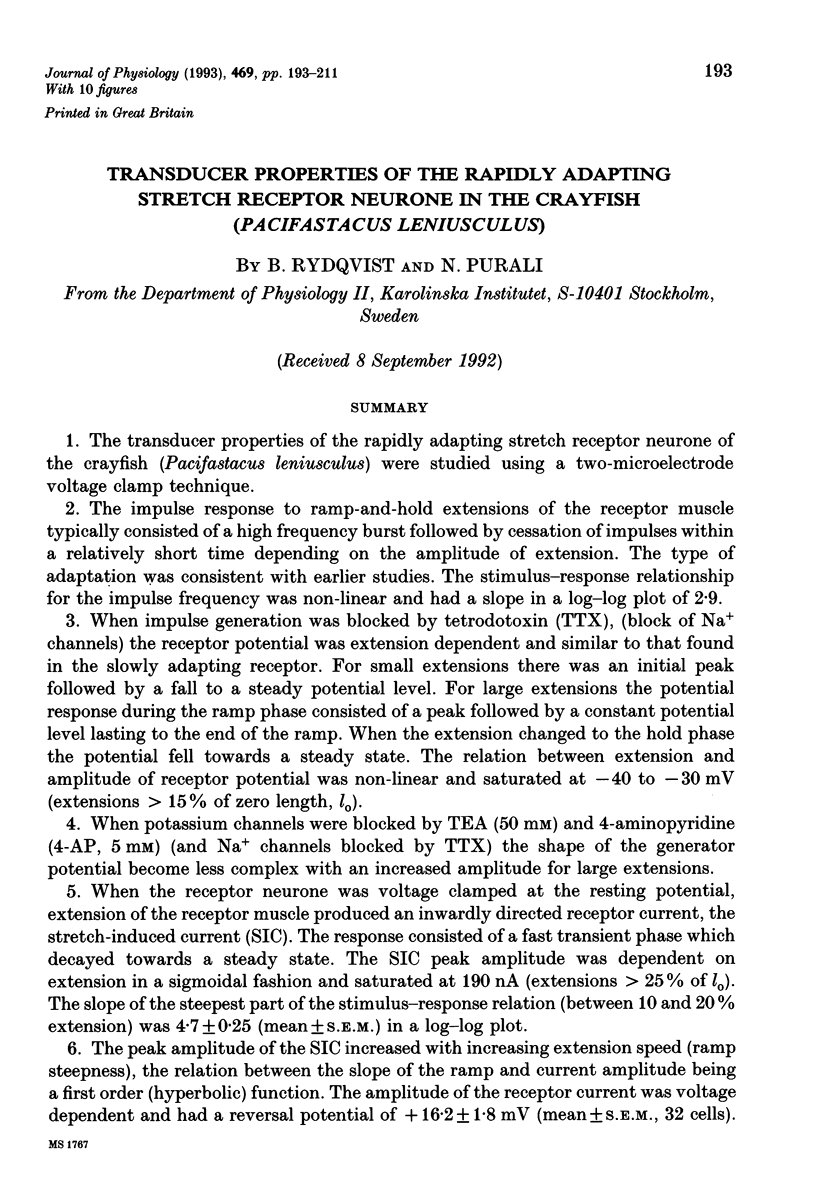
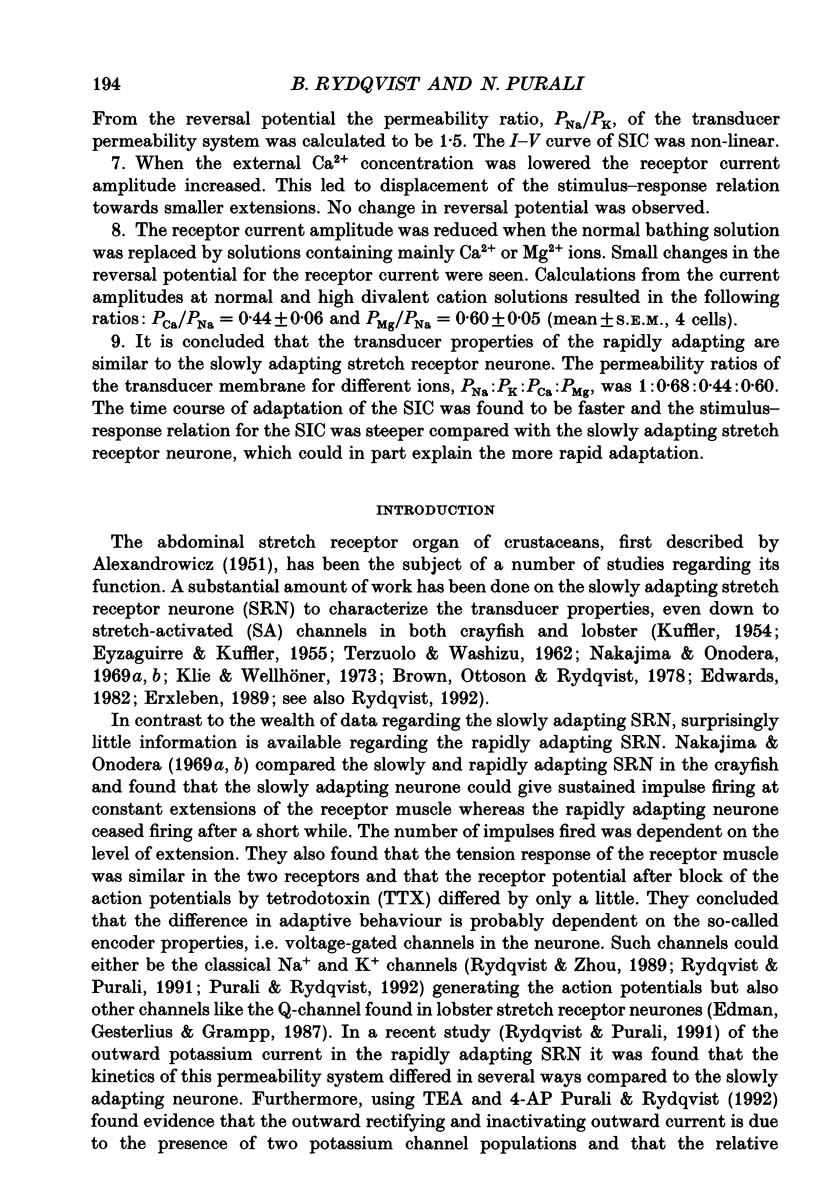
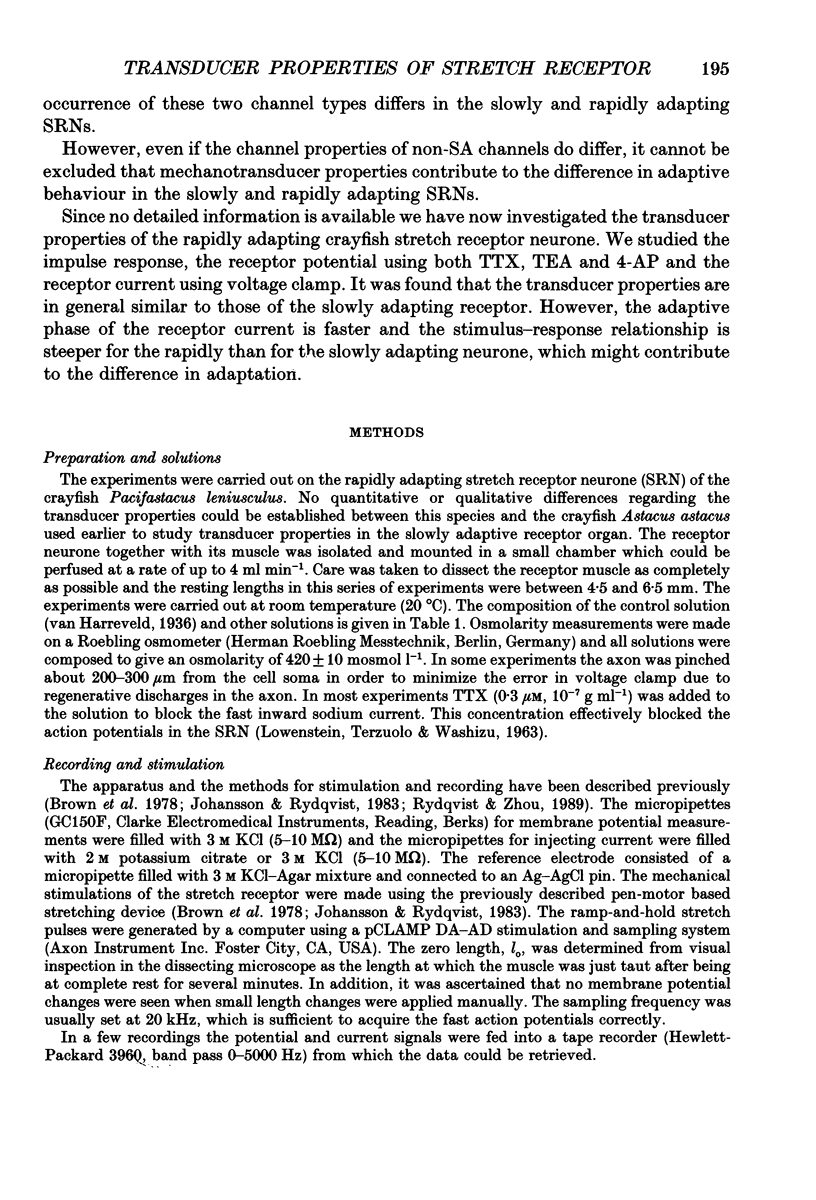
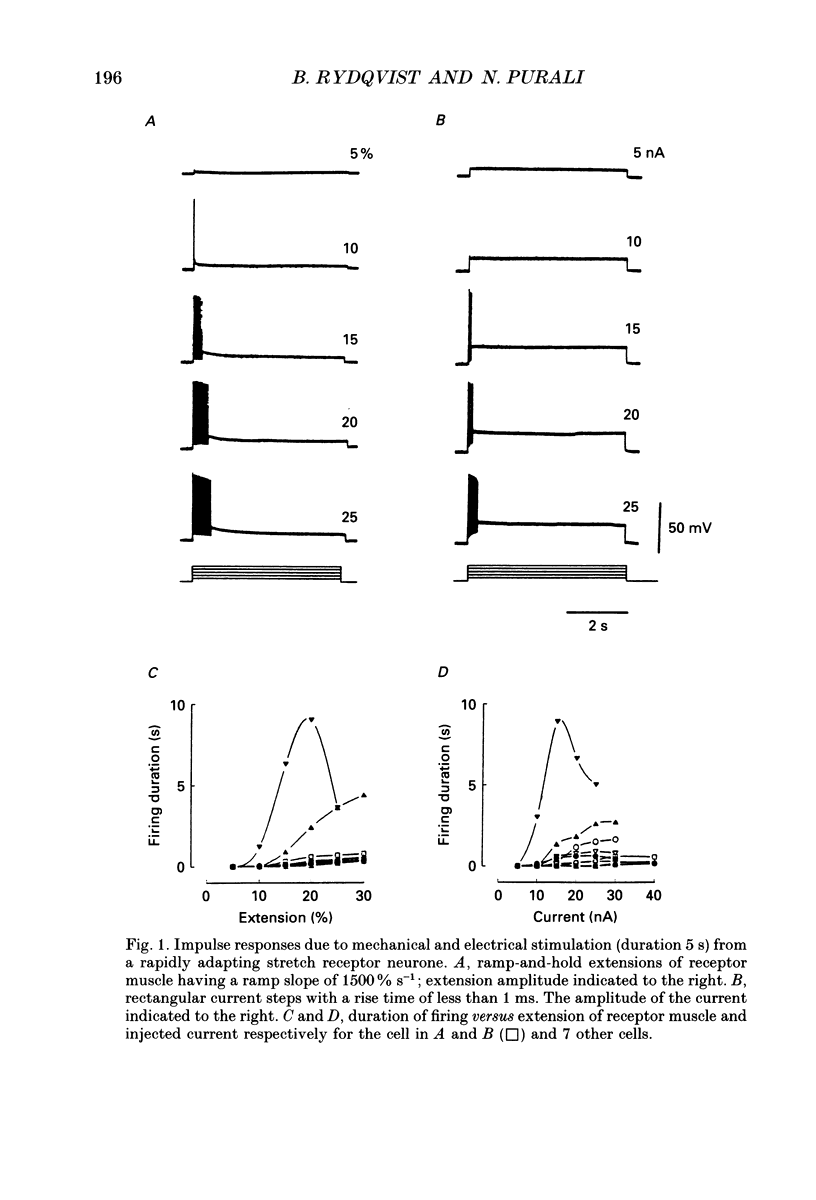
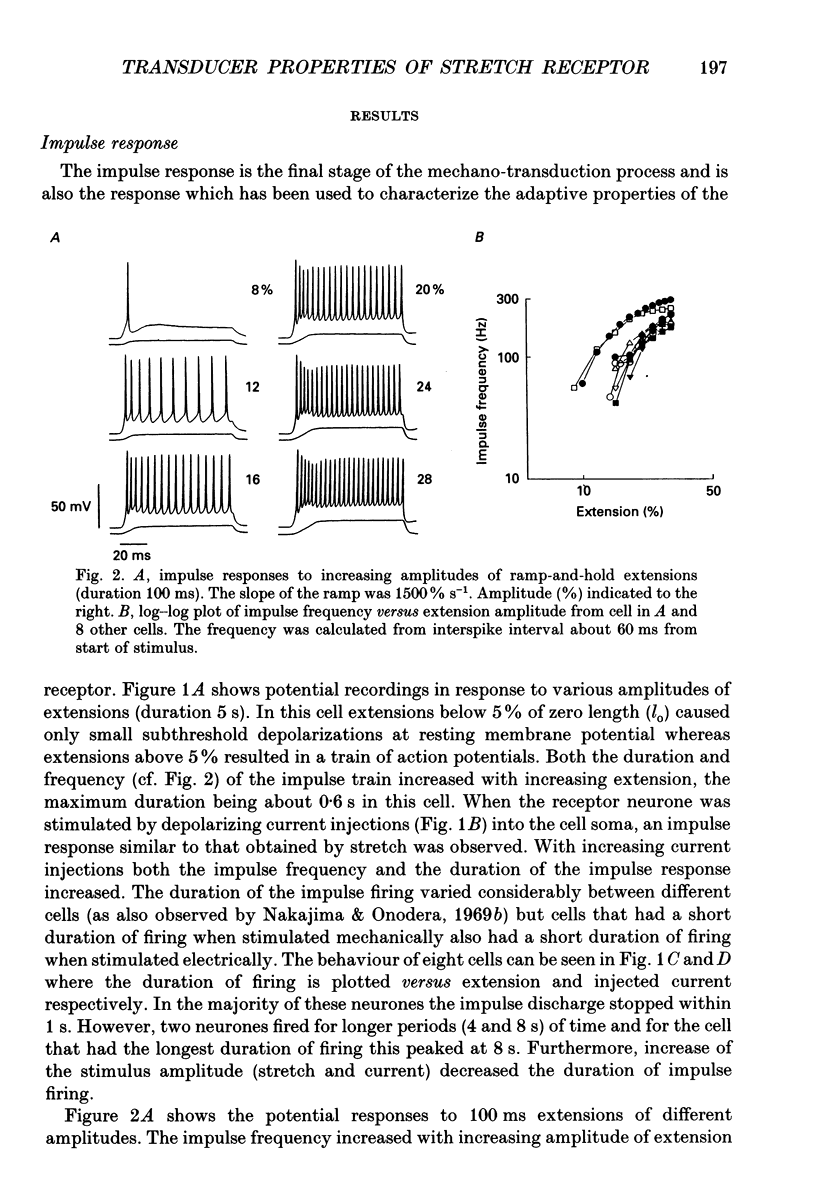
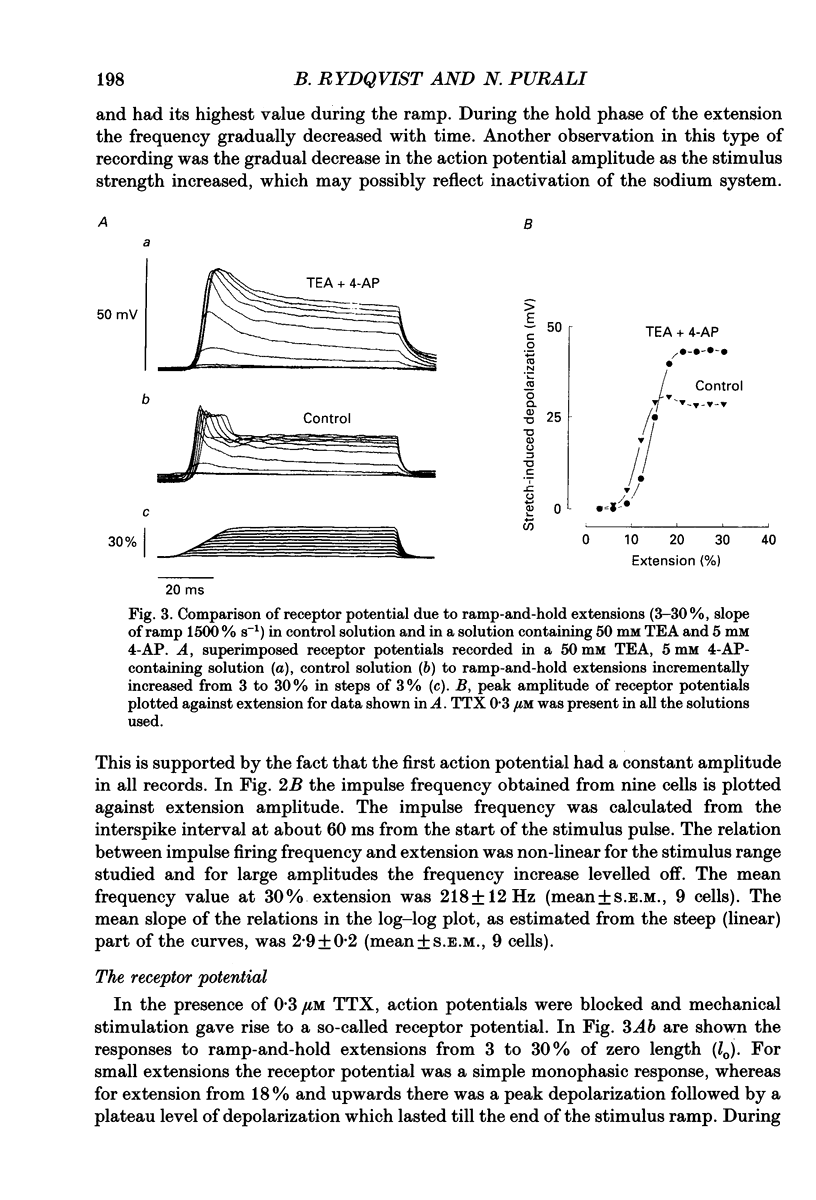
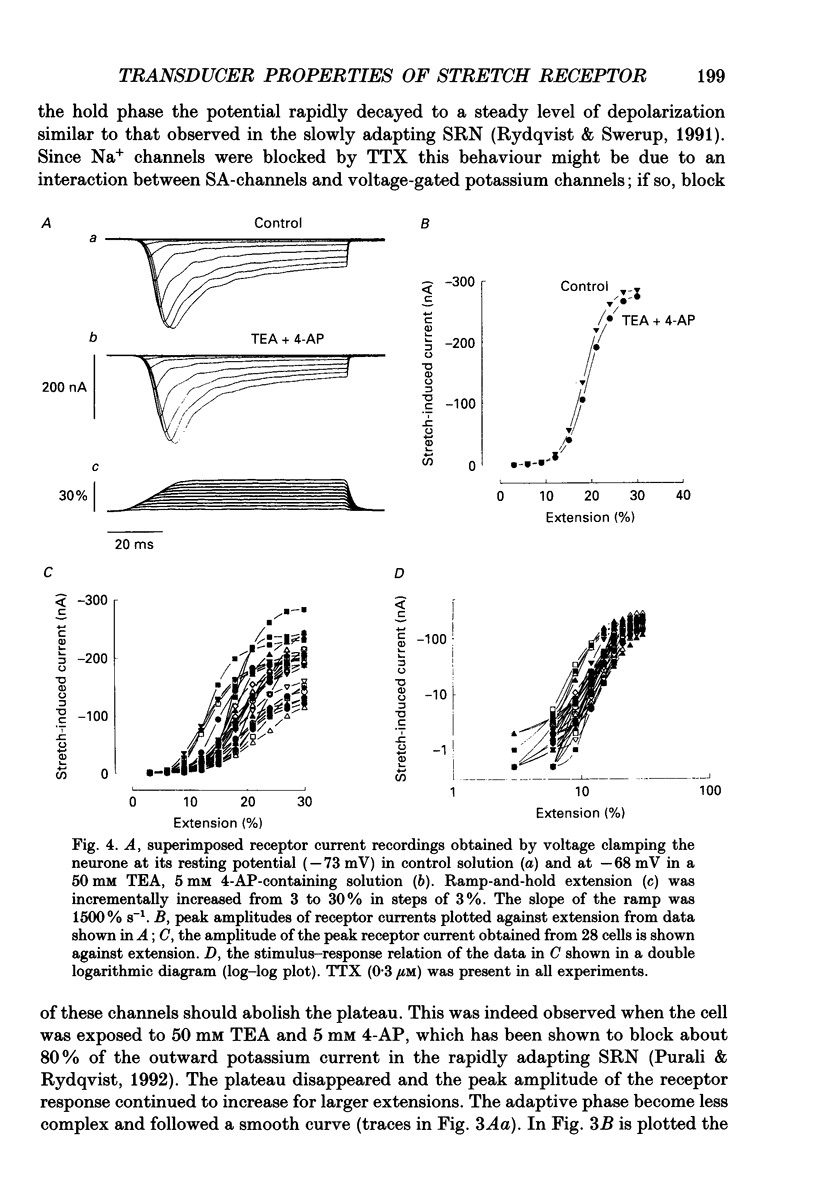
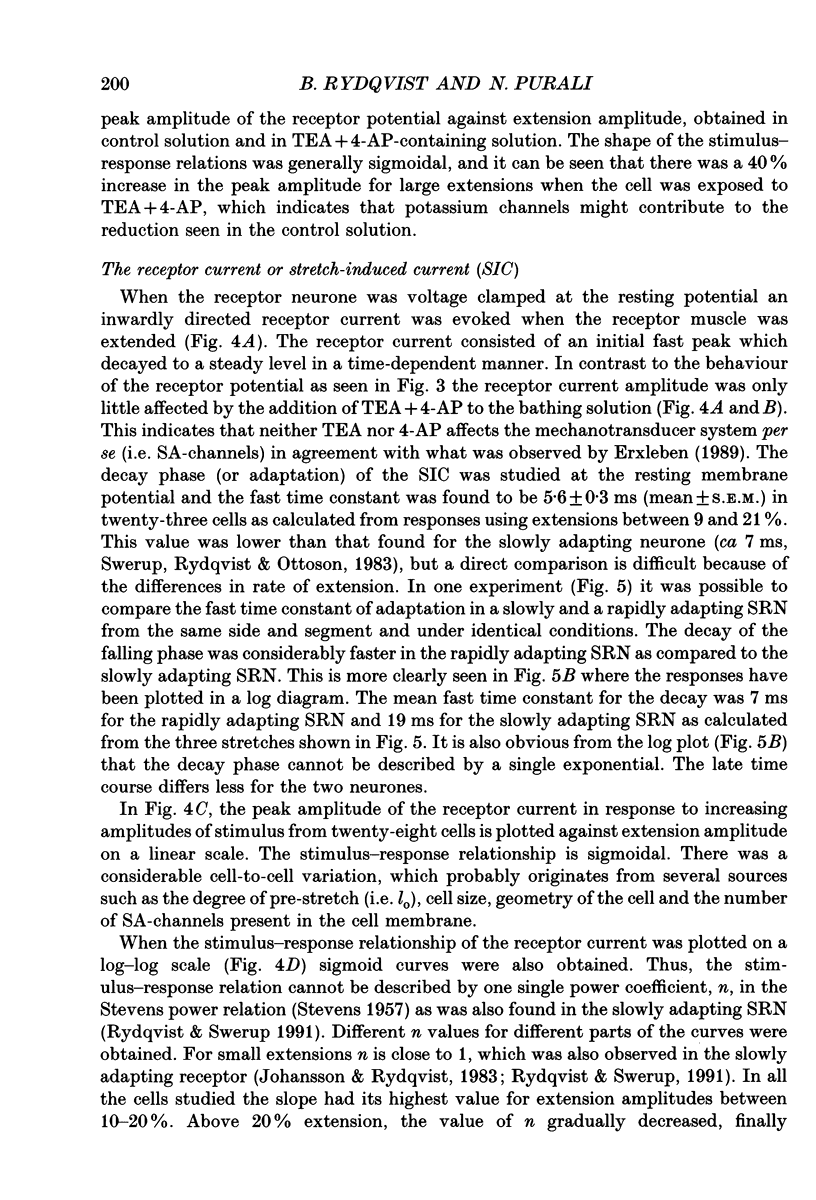
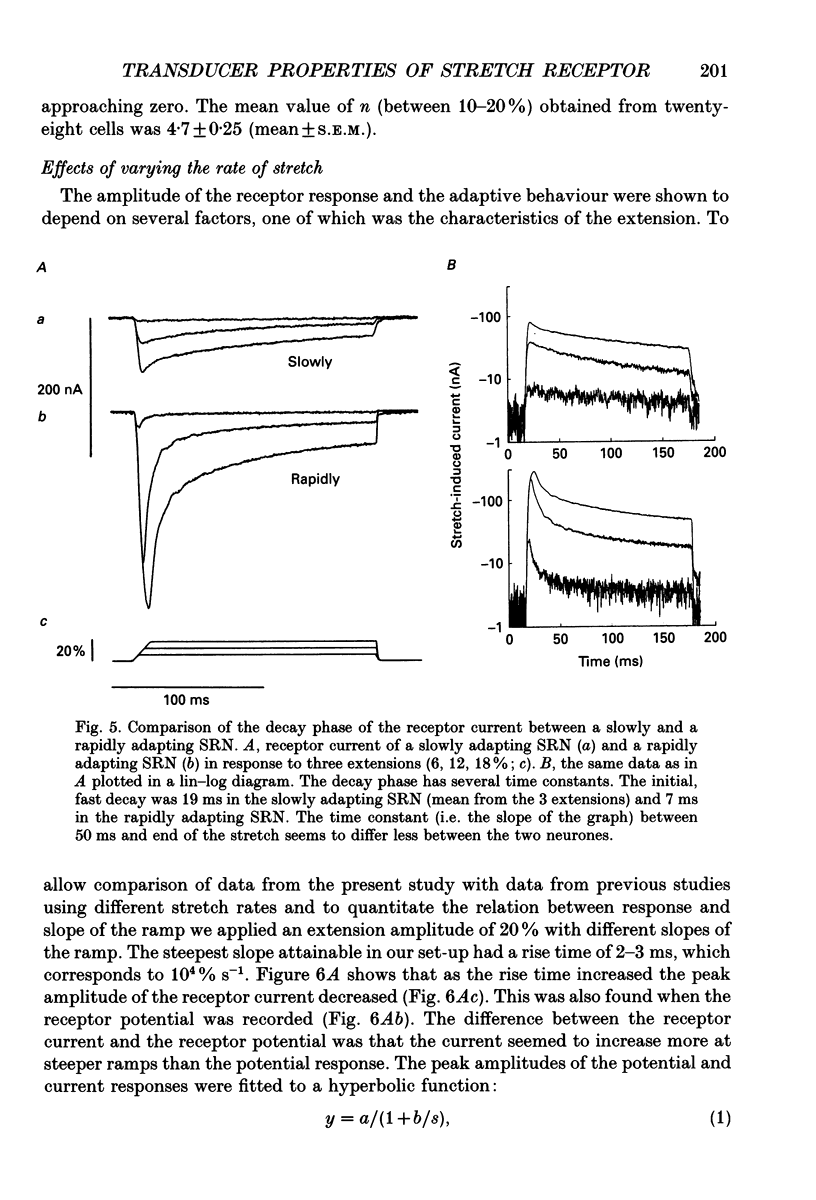
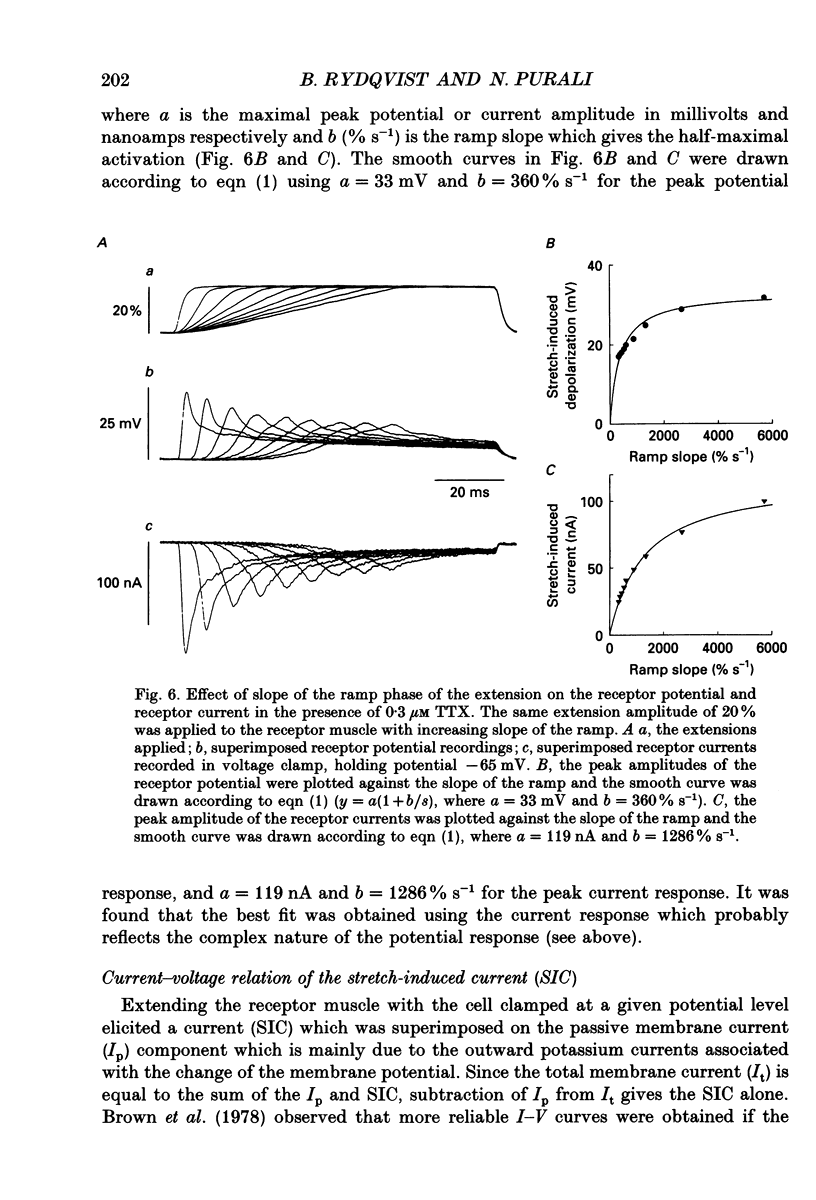
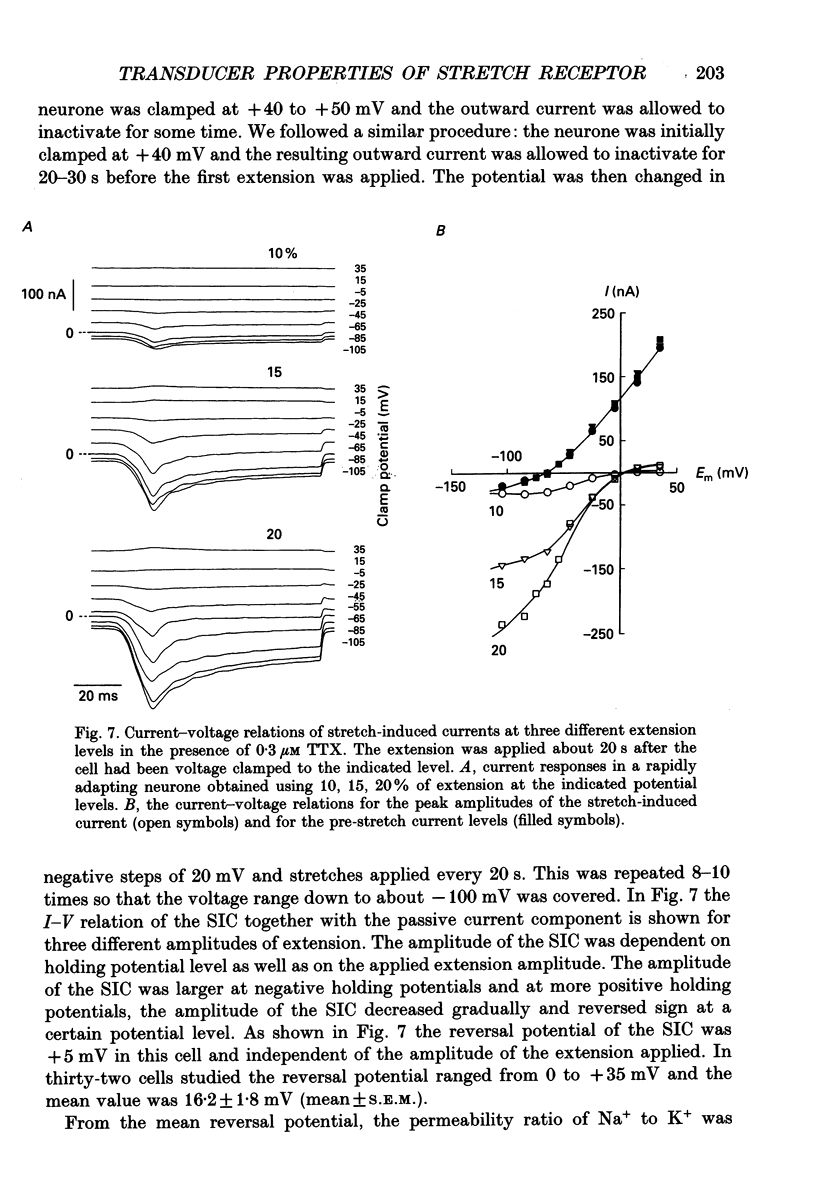
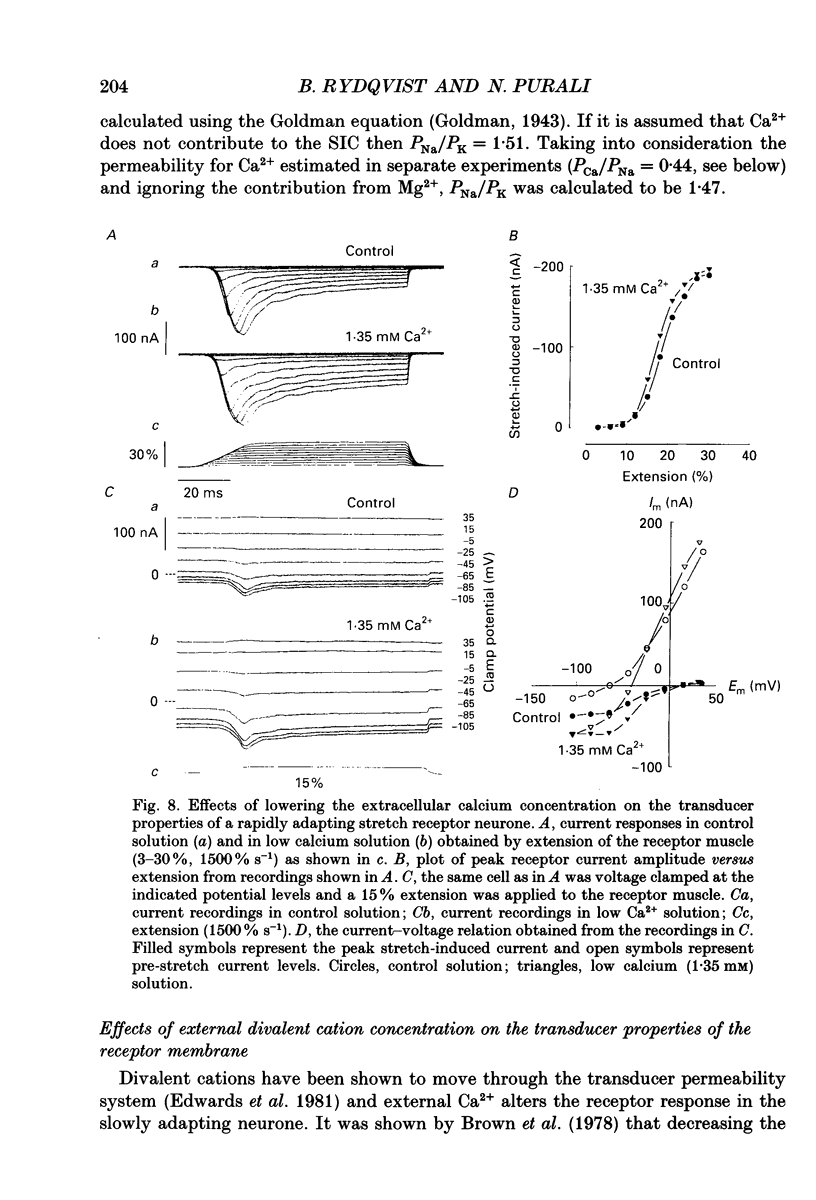
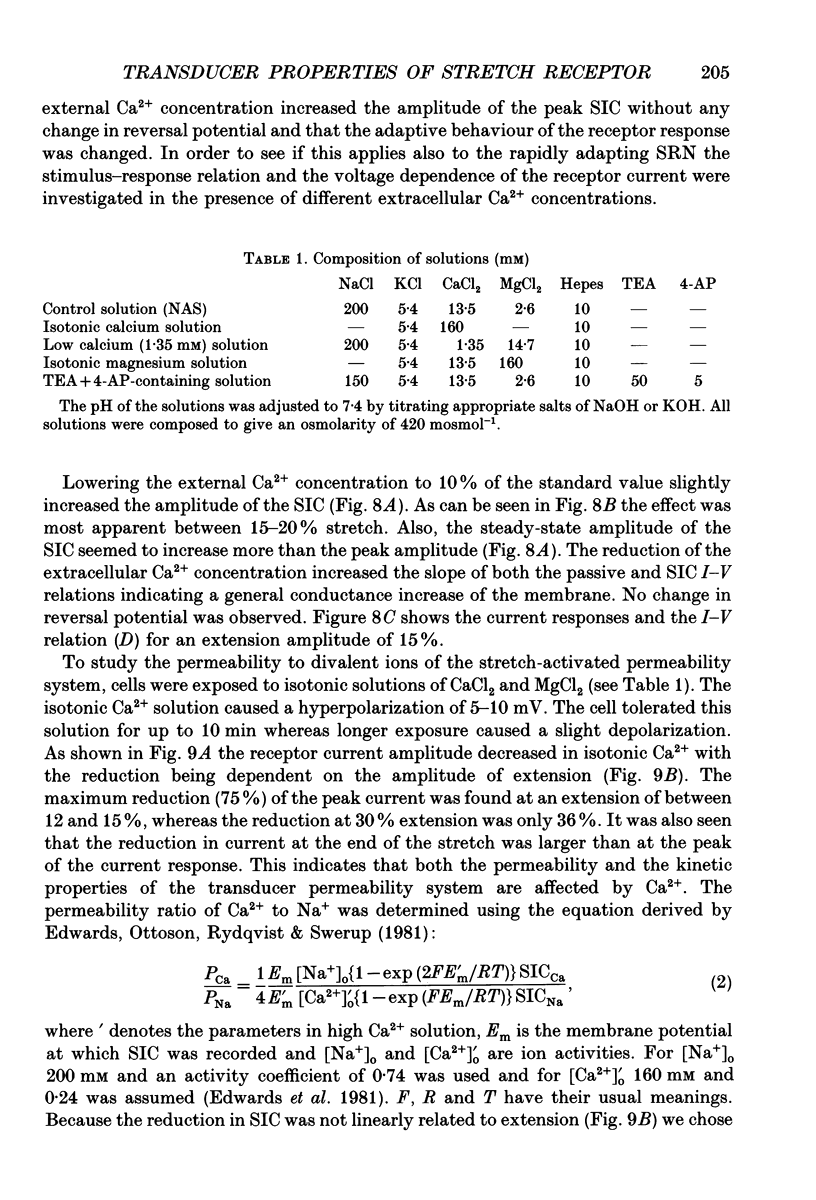
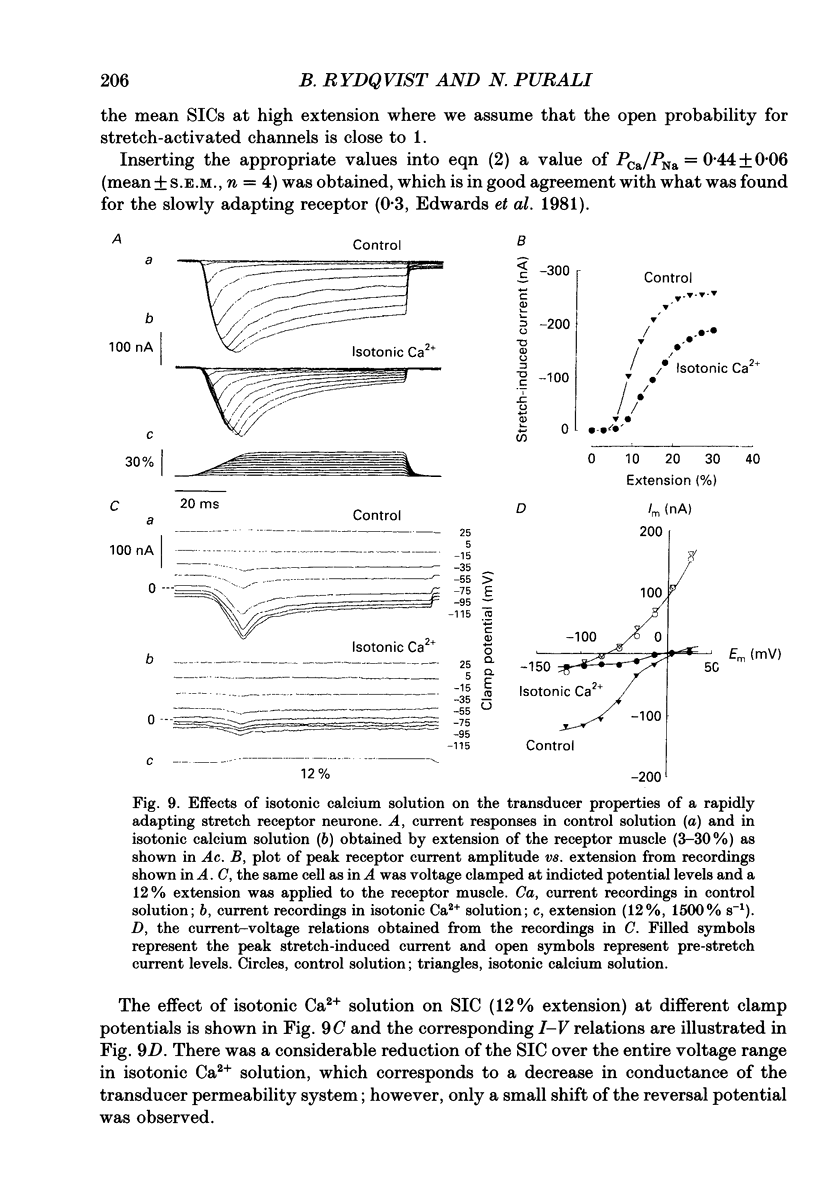
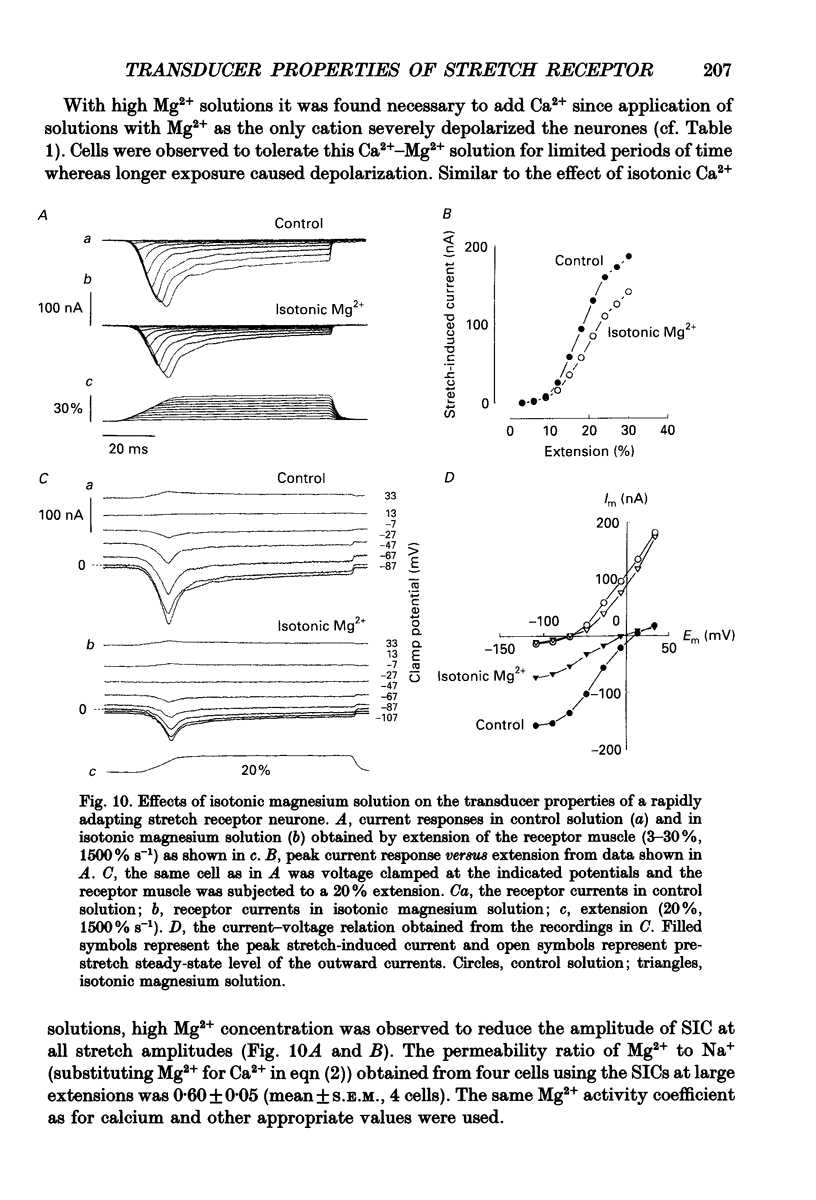
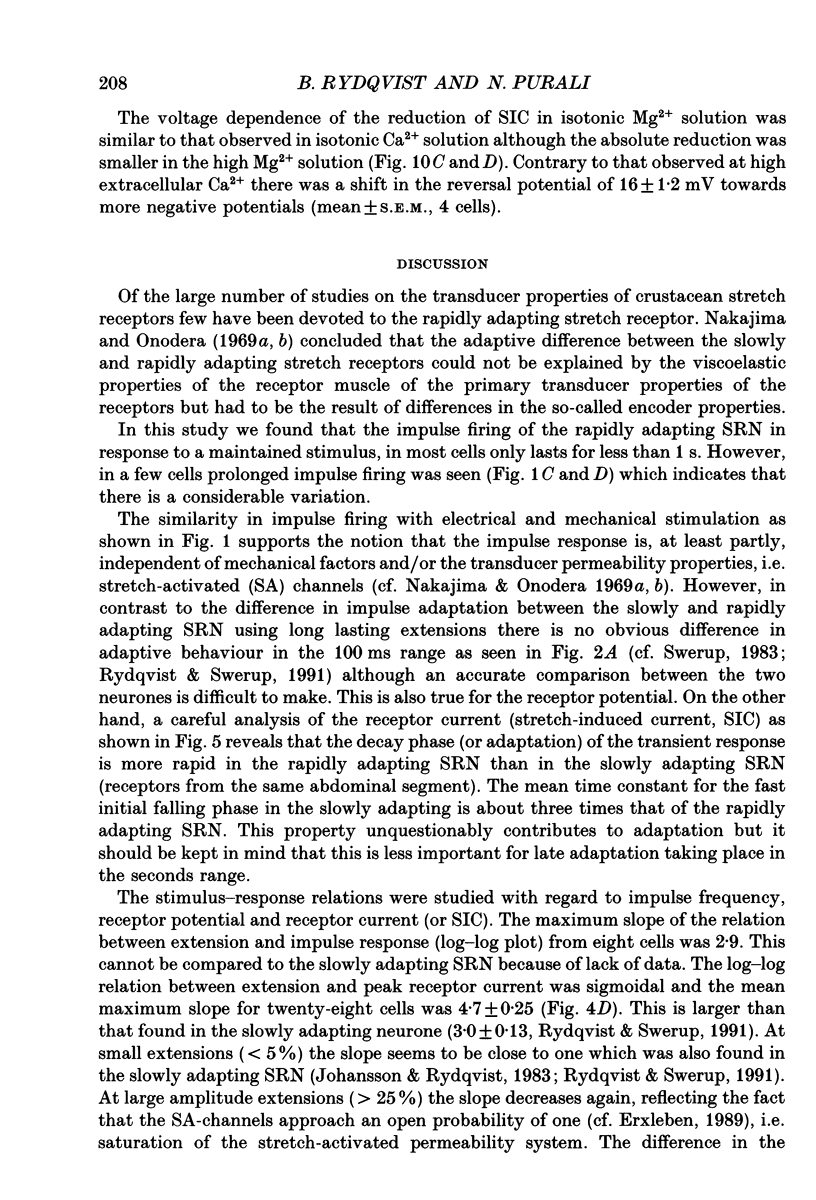


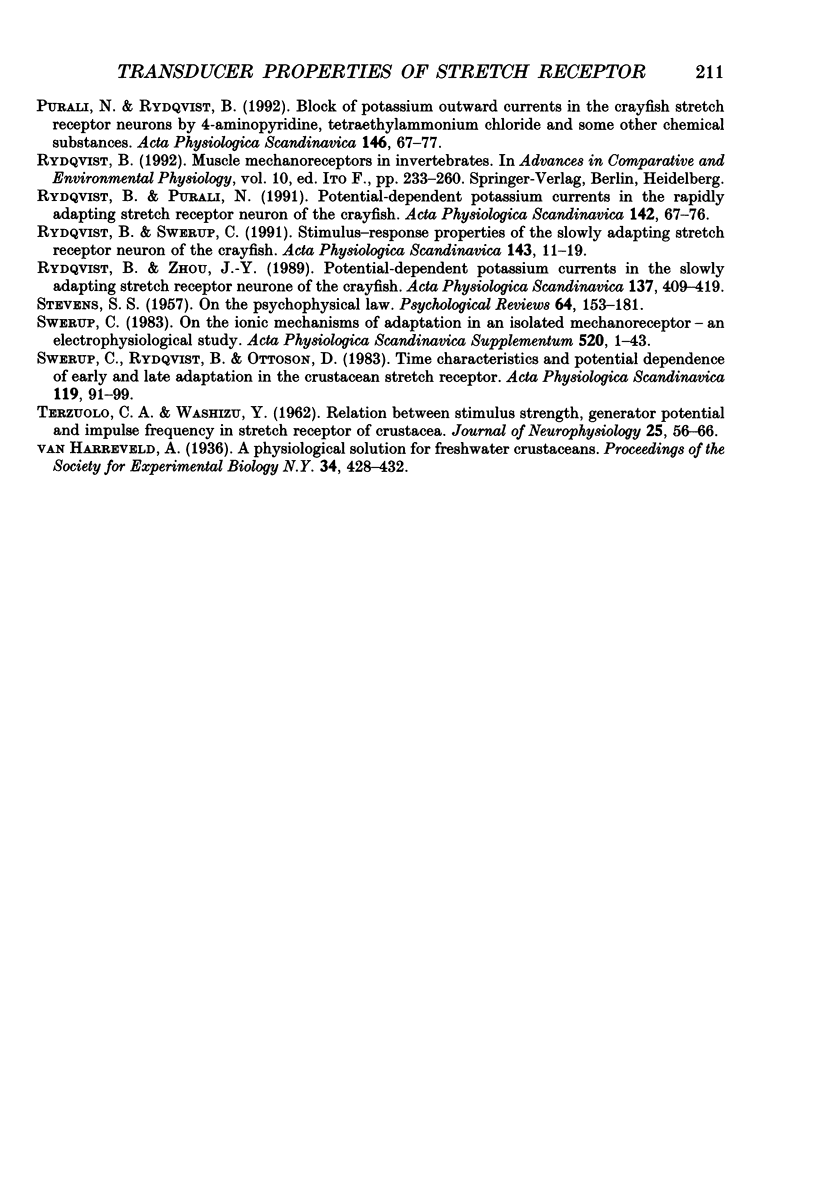
Selected References
These references are in PubMed. This may not be the complete list of references from this article.
- Brown H. M., Ottoson D., Rydqvist B. Crayfish stretch receptor: an investigation with voltage-clamp and ion-sensitive electrodes. J Physiol. 1978 Nov;284:155–179. doi: 10.1113/jphysiol.1978.sp012533. [DOI] [PMC free article] [PubMed] [Google Scholar]
- EYZAGUIRRE C., KUFFLER S. W. Processes of excitation in the dendrites and in the soma of single isolated sensory nerve cells of the lobster and crayfish. J Gen Physiol. 1955 Sep 20;39(1):87–119. doi: 10.1085/jgp.39.1.87. [DOI] [PMC free article] [PubMed] [Google Scholar]
- Edman A., Gestrelius S., Grampp W. Current activation by membrane hyperpolarization in the slowly adapting lobster stretch receptor neurone. J Physiol. 1987 Mar;384:671–690. doi: 10.1113/jphysiol.1987.sp016476. [DOI] [PMC free article] [PubMed] [Google Scholar]
- Edwards C., Ottoson D., Rydqvist B., Swerup C. The permeability of the transducer membrane of the crayfish stretch receptor to calcium and other divalent cations. Neuroscience. 1981;6(7):1455–1460. doi: 10.1016/0306-4522(81)90200-1. [DOI] [PubMed] [Google Scholar]
- Edwards C. The selectivity of ion channels in nerve and muscle. Neuroscience. 1982 Jun;7(6):1335–1366. doi: 10.1016/0306-4522(82)90249-4. [DOI] [PubMed] [Google Scholar]
- Erxleben C. Stretch-activated current through single ion channels in the abdominal stretch receptor organ of the crayfish. J Gen Physiol. 1989 Dec;94(6):1071–1083. doi: 10.1085/jgp.94.6.1071. [DOI] [PMC free article] [PubMed] [Google Scholar]
- Goldman D. E. POTENTIAL, IMPEDANCE, AND RECTIFICATION IN MEMBRANES. J Gen Physiol. 1943 Sep 20;27(1):37–60. doi: 10.1085/jgp.27.1.37. [DOI] [PMC free article] [PubMed] [Google Scholar]
- Johansson B., Rydqvist B. Electrical and mechanical properties of the crustacean stretch receptor during sinusoidal length changes. Acta Physiol Scand. 1983 Feb;117(2):183–194. doi: 10.1111/j.1748-1716.1983.tb07196.x. [DOI] [PubMed] [Google Scholar]
- KUFFLER S. W. Mechanisms of activation and motor control of stretch receptors in lobster and crayfish. J Neurophysiol. 1954 Nov;17(6):558–574. doi: 10.1152/jn.1954.17.6.558. [DOI] [PubMed] [Google Scholar]
- Klie J. W., Wellhöner H. H. Voltage clamp studies on the stretch response in the neuron of the slowly adapting crayfish stretch receptor. Pflugers Arch. 1973 Aug 17;342(2):93–104. doi: 10.1007/BF00587840. [DOI] [PubMed] [Google Scholar]
- LOEWENSTEIN W. R., TERZUOLO C. A., WASHIZU Y. SEPARATION OF TRANSDUCER AND IMPULSE-GENERATING PROCESSES IN SENSORY RECEPTORS. Science. 1963 Nov 29;142(3596):1180–1181. doi: 10.1126/science.142.3596.1180. [DOI] [PubMed] [Google Scholar]
- Nakajima S., Onodera K. Adaptation of the generator potential in the crayfish stretch receptors under constant length and constant tension. J Physiol. 1969 Jan;200(1):187–204. doi: 10.1113/jphysiol.1969.sp008688. [DOI] [PMC free article] [PubMed] [Google Scholar]
- Nakajima S., Onodera K. Membrane properties of the stretch receptor neurones of crayfish with particular reference to mechanisms of sensory adaptation. J Physiol. 1969 Jan;200(1):161–185. doi: 10.1113/jphysiol.1969.sp008687. [DOI] [PMC free article] [PubMed] [Google Scholar]
- Purali N., Rydqvist B. Block of potassium outward currents in the crayfish stretch receptor neurons by 4-aminopyridine, tetraethylammonium chloride and some other chemical substances. Acta Physiol Scand. 1992 Sep;146(1):67–77. doi: 10.1111/j.1748-1716.1992.tb09394.x. [DOI] [PubMed] [Google Scholar]
- Rydqvist B., Purali N. Potential-dependent potassium currents in the rapidly adapting stretch receptor neuron of the crayfish. Acta Physiol Scand. 1991 May;142(1):67–76. doi: 10.1111/j.1748-1716.1991.tb09129.x. [DOI] [PubMed] [Google Scholar]
- Rydqvist B., Swerup C. Stimulus-response properties of the slowly adapting stretch receptor neuron of the crayfish. Acta Physiol Scand. 1991 Sep;143(1):11–19. doi: 10.1111/j.1748-1716.1991.tb09196.x. [DOI] [PubMed] [Google Scholar]
- Rydqvist B., Zhou J. Y. Potential-dependent potassium currents in the slowly adapting stretch receptor neuron of the crayfish. Acta Physiol Scand. 1989 Nov;137(3):409–419. doi: 10.1111/j.1748-1716.1989.tb08771.x. [DOI] [PubMed] [Google Scholar]
- STEVENS S. S. On the psychophysical law. Psychol Rev. 1957 May;64(3):153–181. doi: 10.1037/h0046162. [DOI] [PubMed] [Google Scholar]
- Swerup C. On the ionic mechanisms of adaptation in an isolated mechanoreceptor --an electrophysiological study. Acta Physiol Scand Suppl. 1983;520:1–43. [PubMed] [Google Scholar]
- Swerup C., Rydqvist B., Ottoson D. Time characteristics and potential dependence of early and late adaptation in the crustacean stretch receptor. Acta Physiol Scand. 1983 Sep;119(1):91–99. doi: 10.1111/j.1748-1716.1983.tb07310.x. [DOI] [PubMed] [Google Scholar]
- TERZUOLO C. A., WASHIZU Y. Relation between stimulus strength, generator potential and impulse frequency in stretch receptor of Crustacea. J Neurophysiol. 1962 Jan;25:56–66. doi: 10.1152/jn.1962.25.1.56. [DOI] [PubMed] [Google Scholar]


